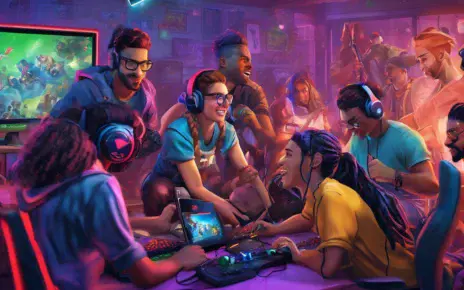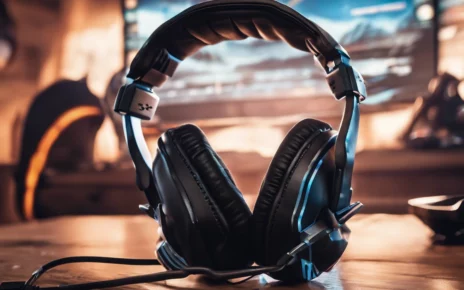Capture cards might sound technical, but they are essential tools for content creators and gamers who want to deliver smooth, high-quality streams. If you’ve ever watched a live stream with crisp visuals and zero lag, chances are a capture card was involved. But what exactly is a capture card, and do you need one? Let’s break it down.
What is a Capture Card?
A capture card is a device that records video from one source—such as a gaming console, camera, or another computer—and transfers it to your PC for streaming or recording. It enhances video quality by ensuring high-resolution, low-latency footage, making your content look professional. Whether you’re streaming gameplay, hosting a live podcast, or creating YouTube content, a capture card can significantly improve the production value of your work.
Do You Need a Capture Card?
If you’re serious about streaming and want to stand out from the crowd, investing in a capture card is a smart move. Here’s why:
- Better Video Quality: Capture cards allow you to stream in higher resolutions and frame rates, ensuring a smooth, professional look.
- Reduced Lag & Stuttering: Unlike screen capture software, a capture card reduces system load, preventing lag and performance drops.
- Versatility: Whether you’re recording gameplay, live streaming, or creating tutorial videos, a capture card makes the process seamless.
- Multi-Platform Compatibility: Capture cards work with various devices, including PlayStation, Xbox, Nintendo Switch, and cameras.
A common misconception is that capture cards are only for professionals or expensive. In reality, there are affordable options for beginners and advanced models for pros, making them accessible to all types of content creators.
Key Features to Look for in a Capture Card
Choosing the right capture card is like picking the perfect gaming setup—you need to consider the features that match your needs. Here’s what to keep in mind:
1. Resolution & Frame Rate Support
If you want your streams to look silky smooth, check the resolution and frame rate capabilities. Some capture cards support 1080p at 60fps, while higher-end models offer 4K passthrough and recording. The better the resolution, the sharper your streams will look.
2. Compatibility with Devices & Software
Not all capture cards work with every console or streaming platform. Ensure the one you choose supports your gaming console (PS5, Xbox Series X, Nintendo Switch) or PC setup. Additionally, verify compatibility with popular streaming software like OBS Studio, Streamlabs, or XSplit.
3. Low Latency Performance
Latency is the delay between what’s happening in your game and what your viewers see. Low-latency capture cards ensure real-time streaming, which is crucial for fast-paced games like Fortnite, Call of Duty, or Apex Legends.
4. Passthrough Technology
Want to play in high resolution while streaming? Look for a capture card with passthrough technology, allowing you to enjoy 4K gameplay on your monitor while streaming in 1080p.
5. Audio Synchronization
Good audio is just as important as video. Choose a capture card with proper audio sync capabilities to prevent sound lag issues.
6. External vs. Internal Capture Cards
Capture cards come in two main types:
- External Capture Cards – Portable, easy to set up via USB, ideal for streamers who switch between setups.
- Internal Capture Cards – Installed directly into your PC’s PCIe slot, offering superior performance, ideal for professional streamers.
The Best Capture Cards for Beginners
Starting your streaming journey without breaking the bank? There are budget-friendly capture cards that offer great performance without complex setups. Here are some top picks:
- Elgato HD60 S – A great plug-and-play option with 1080p 60fps streaming and ultra-low latency.
- AVerMedia Live Gamer Mini – Compact, affordable, and supports USB 2.0 connectivity for easy use.
- Razer Ripsaw HD – Offers 4K passthrough, making it an excellent choice for console gamers.
These options are beginner-friendly, delivering solid resolution and refresh rates while being easy to set up.
Best Capture Cards for Professional Streamers
For seasoned streamers, investing in a high-end capture card ensures top-tier streaming quality. Here are some of the best choices:
- Elgato 4K60 Pro MK.2 – One of the best PCIe internal capture cards, supporting 4K HDR10 recording at 60fps.
- AVerMedia Live Gamer 4K – A powerful internal capture card with HDR support and zero-lag passthrough.
- Magewell Pro Capture HDMI 4K Plus – A professional-grade capture card designed for ultra-high-quality 4K streaming.
These models provide high bitrate support, customizable settings, and top-notch video clarity, perfect for advanced streaming setups.
How to Optimize Your Capture Card for Streaming
Getting the best performance from your capture card requires proper setup and maintenance. Here’s how to optimize it:
1. Install Your Capture Card Correctly
- If using an external capture card, connect it to your PC via USB 3.0 or Thunderbolt.
- If using an internal capture card, install it in a PCIe slot for optimal bandwidth.
2. Use the Right Streaming Software
Most capture cards work seamlessly with:
- OBS Studio (Free, highly customizable)
- Streamlabs OBS (User-friendly with built-in overlays)
- XSplit (Advanced streaming features, premium software)
3. Keep Your Drivers & Firmware Updated
Manufacturers frequently release updates that improve performance and compatibility. Ensure your capture card drivers are up-to-date.
4. Adjust Bitrate & Encoding Settings
- For 1080p streaming, use 6,000 kbps bitrate.
- For 4K streaming, use 20,000+ kbps bitrate with a fast internet connection.
5. Troubleshoot Common Issues
- Audio Desync? Adjust audio delay settings in OBS.
- Black Screen? Ensure your capture card is properly selected as a source.
- Laggy Stream? Lower bitrate or check USB/PCIe bandwidth limitations.
Final Thoughts: Elevate Your Streaming Experience
Capture cards play a huge role in creating high-quality streams. Whether you’re a beginner or a pro, choosing the right capture card can take your content to the next level. Prioritize resolution, compatibility, and low latency when selecting a capture card to ensure smooth streaming. By optimizing your setup and troubleshooting potential issues, you can deliver a professional and engaging experience to your audience.
Ready to start streaming? Pick the best capture card for your needs and start creating high-quality content today!




